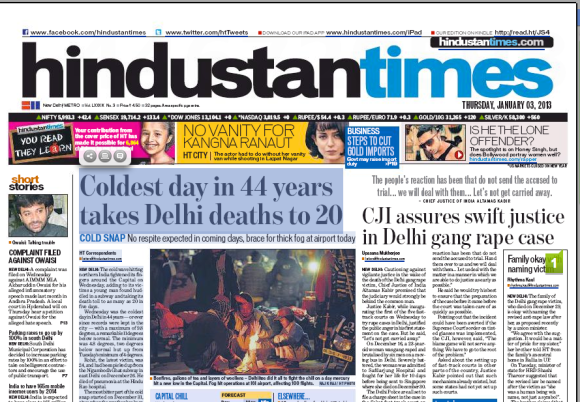On an early Wednesday morning, while most Indians were yet to shake off their slumber, the world woke up to a band of scientists who had quietly achieved what Prime Minister Modi would later describe as a “near impossible” task: India had become the only country to reach Mars in its first attempt at an incredibly low cost of just Rs 450 crore (not even a sixth of Hindustan Unilever’s reportedly astronomical spends on advertising).
It was a Wednesday but Mangal was within sight. And Twitter went crazy. For many of us, tweets spiralling down the timeline told us what mass media could only replicate a little later. But, among the many trending topics and tweets, one stood out: Curiosity, NASA’s counterpart in the race to the Red Planet, was the first to tweet with a greeting, “Namaste, @MarsOrbiter! Congratulations to @ISRO and India’s first interplanetary mission upon achieving Mars orbit.” Forget the fact that it was immediately retweeted along with @ISRO’s cheeky “Howdy @MarsCuriosity ? Keep in touch. I’ll be around”… India’s scientists were finally getting their place in the sun and reveling in it.
But, pause. Look deeper at the paradox of these tweets: an intrinsically Indian entity uses the typical Texan “Howdy” whereas the all-American NASA salutes ISRO with a “Namaste”.
In a society where English is rapidly becoming cool and Hindi uncool, it isn’t just metro students and professionals who have abandoned native languages and adopted English with alacrity, but even blue-collared working classes. Keep your ears open and you’ll hear drivers in your building greet each other with a handshake and “good morning”. Maids will bid the house mistress adieu with a “goodbye” and not the customary Hindi or Bangla term; the latter being the other lingua franca in Gurgaon where the ABCD class is dominated by Bangladeshis with Aadhar cards. (ABCD being Ayahs, Bearers, Cooks, Drivers…add rickshaw-pullers to it too.) When did Namasté become alien? And why?
Again paradoxically, at the very upmarket, and reportedly elitist, Shri Ram School in Gurgaon, however, the default greeting is not “Good Morning” but “Namasté” among students and teachers, parents and teachers et al. No handshakes but the traditional folded hand and a slight bow that expresses the meaning of the word at its very best in a school that enshrines Indian culture and has been consistently ranked as the best in the country.
Etymologically, “Namasté” is a sandhi of the Sanskrit ‘namah’ and ‘te’. ‘Namah’ means ‘bow’ or ‘obeisance’ or ‘a reverential salutation’ or ‘adoration’ and ‘te’ means ‘to you’. Therefore, ‘Namas te’ literally means ‘bowing to you’. The word is naturally spoken with a slight bow and with hands pressed together, palms touching and fingers pointing up, thumbs close to the chest in a gesture is called AñjaliMudrā or Pranamasana. In Hindu scriptures, it means “I bow to the divine in you.”
Namasté (or Namaskar) is used as a greeting usually acknowledging and welcoming a relative, guest or stranger with very high respect.
So, when NASA tweeted “Namaste” (sic…without the accent in é) was it unknowingly paying tribute to the higher order that is now India? Think about it while you bask in the reflected glory of Mangalyaan.
Namasté ISRO. Namasté Mars.


 Once opened, the brother and I would stand aside and salivate. A teaspoon would go into the tea being boiled after which it was our turn to dig into the sticky, sweet condensed manna-like milk. Those were days when we didn’t have a refrigerator and the can was too expensive to be finished in one go; so, it would be stored away in the hope that red ants wouldn’t discover it and that it wouldn’t spoil. On many occasions, both have happened but usually a plate with water on which the can would be perched, sufficed.
Once opened, the brother and I would stand aside and salivate. A teaspoon would go into the tea being boiled after which it was our turn to dig into the sticky, sweet condensed manna-like milk. Those were days when we didn’t have a refrigerator and the can was too expensive to be finished in one go; so, it would be stored away in the hope that red ants wouldn’t discover it and that it wouldn’t spoil. On many occasions, both have happened but usually a plate with water on which the can would be perched, sufficed.





Cheers & Jeers